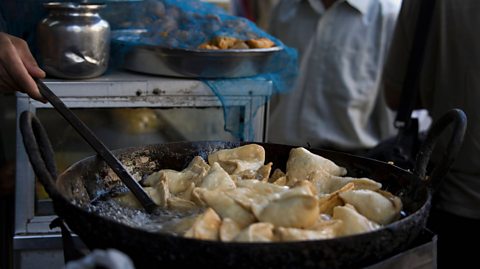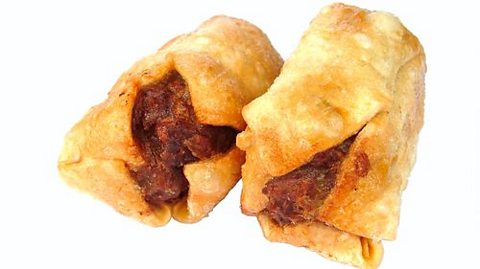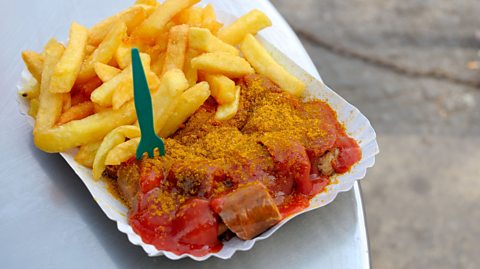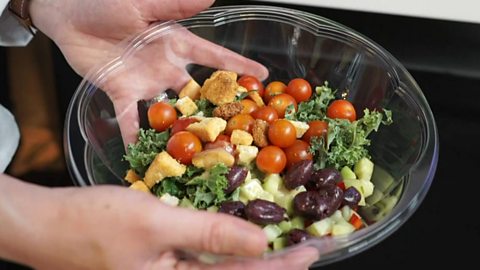Fish and chips has been deep fried into British culture.
So much so, the popular takeaway dish even has its own national day, celebrated by all those involved in bringing a tasty portion of to the people.
80% of Brits visit a chippy at least once a year with 382 million fish and chip meals eaten each year. That's not bad for two street foods brought together in a winning combination 150 years ago. By 1929, there were 35,000 fish and chip shops in the UK.
But Britain is not unique in having a particular fast food thatâs close to the nationâs heart. Here are six treats out of local takeaways and street food carts that have become national treasures.
India
Samosas can be picked up at most supermarkets in the UK. On the streets of India, theyâre something people buy from street vendors for a bit of everyday fuel, a dish with a history that goes back centuries and a simplicity that has cemented it into the culture.

Itâs great news for any tourists who keep to a meat-free diet as those tight, are usually packed with veg - although meat varieties are available.
Samosas began life in Central Asia (samsa means pyramid, which explains the shape) and was originally made over the camp fire by travellers. Its appeal was such even royalty had it on the menu before too long. Its popularity extends far beyond India, where other countries devise their own fillings, but itâs here it remains the go-to snack for a population of more than 1.3 billion.
Russia
Although pop up as cocktail nibbles in the west, the larger version is an everyday staple in Russia, readily available as fast food.

They also have a long history, dating back to pre-Christian times when the round pancakes, usually made with yeasted batter, were made as symbol of the Sun. As the harsh winters drew to a close, Maslenitsa, also known as Butter Week, took place, and blinis were prepared to welcome the Sun back as spring dawned. There is even a type of blini, the drochena, served at wakes to mark the passing of those who have just died.
Buy your blini from a fast food vendor in Russia and youâll be offered popular local toppings too, including caviar.
Sweden
If you thought that meatballs or rollmop herring would be the big street food favourites down Stockholm way, the next story might surprise you.

In the 1940s, pizza arrived in Sweden at the same time as 300 Italian workers who moved to the city of VÀsterÄs. Twenty years later, pizza was by far the most popular fast food in the country. Then came the 1980s and the kebab became popular in Sweden for the first time, along with a spicy kebab sauce that is so popular it can be bought in jars at the supermarket.
It wasnât long before the popularity of the two foods combined and a uniquely Swedish creation came from the meeting of Italian and Turkish food cultures.
1 January is huge for pizza sales in Sweden, and especially the kebab variety. There is no specific reason behind this, although it is put down to a blend of wanting a rest after partying the night before.
Canada
A portion of chips can be customised in so many ways. In Canada, they've done something so remarkable itâs now the stuff of legend - or popular culture at least. You can't go far on a Canadian street without finding somewhere that sells .

Poutine is a mix of fries, curd cheese (the squeaky kind) and gravy. Apart, those three ingredients are powerful enough; mix them together, and they have an impact on the taste buds even Thanos would struggle to contain. And it all began in the Quebec countryside in the 1950s.
Many places in the French-speaking province lay claim to inventing the dish, but one story sees it start at the restaurant Le Lutin Qui Rit (The Laughing Elf). Eddy Lainesse, a customer, asked owner Fernand Lachance to mix cheese curds from the menu in with the french fries and to put them in one bag for him as he was in a hurry.
When Mr Lainesse observed the combination coming together in the bag, he declared it in his best Quebecois, poutine - meaning 'a mess'.
That story doesnât include the gravy which, legend says, was added in 1964 when a restaurant owner saw his customers putting it on the curd-and-fries combo themselves. He made it part of the dish as ordered and the gravy eventually became one third of a tasty trinity.
Australia
In the 1850s, the Gold Rush attracted fortune-seekers from all over the world to Australia. Melbourne, in the state of Victoria, reaped the benefits as it became one of the most wealthy places in the world.

Immigrants from China made their home there, and it wasnât long before their culinary influences made an impact on the local diet.
A dim sim (a misspelling of that stuck) is known as a âdimmyâ in Australia and a chip shop staple. Itâs a blend of cabbage, minced meat and seasoning wrapped in the traditional dim sum pastry.
Customers have a choice of deep-fried or steamed versions, and either version is usually served up with a drizzling of soy sauce. It's one of the top takeaway choices for Australians and a dish that's very much their own.
Germany
If Britain is forever linked with fish and chips, Germany will forever be associated with the wurst. Currywurst in particular.
This sausage and chips dish is made that bit more special by the addition of a sauce which combines the colour of ketchup with the spicy sensation of curry.

Itâs not that old, either. The story of currywurst goes back just 70 years to a time when a post-war Berlin was undergoing reconstruction. An enterprising woman called Herta Heuwer had got her hands on ketchup and curry powder from British soldiers who were based in Germany, so she blended them together with a few other ingredients and dressed a grilled pork sausage with the result.
To say it was a hit is to put it mildly. Herta sold her creation cheaply on the streets of Berlin, where there were plenty of construction crews in need of a hearty snack. Hettaâs stand sold 10,000 servings of currywurst a week at the height of its powers, with the sauce patented under the name Chillup.
Herta died in 1999 and, while others lay claim to the title of currywurst creator, such was her legacy that the 100th anniversary of her birth was marked with a Google doodle. Thatâs some portion of sausage and chips.
How do humans digest food? video
Find out what our human body does with the food that we eat

Vegetarians and vegans
Vegetarians and vegans live by specific dietary guidelines. Find out more with this ±«Óătv Economics: Food and Nutrition guide (CCEA).

What is dietary fibre? video
Dietary fibre is found in food. Find out about its important role in digestion in this Bitesize science video for KS3.
